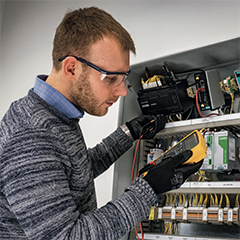How can we make the most out of wind energy with smarter grid and market integration?
As we move towards net zero carbon emissions targets, significant efforts to connect more clean energy resources to the grid are being made.
Globally, the energy industry is welcoming innovations in renewable energy and Distributed Energy Resource (DER) assets. As a result, correctly managing and distributing the energy from these DER assets to enable the most efficient, clean and smart energy system is a big focus for system operators, utilities and asset owners alike.
Big strides have been made already in the capabilities of energy storage and distribution networks, with major projects testing long-term battery models. A recent study by Wood Mackenzie revealed that it is expected that cumulative capacity of distributed storage and solar in North America, Europe and Oceania will double by 2025. Similar predictions were made by The International Renewable Energy Agency (IRENA) who project that the onshore wind capacity growth rate will quadruple to more than 200 GW added annually by 2040.
Renewables by nature are intermittent. The sun does not always shine and the wind does not always blow. Add to that, the current uncertainty over the long-term implications of the Covid-19 pandemic and subsequent lockdowns and economic changes on electricity demand, there are many variables which can impact the level of renewable penetration, the decarbonisation of the grid and the operation of wind power on a daily basis.
As it stands, the UK is the world leader in offshore wind, reaching the capability to power the equivalent of 4.5 million homes per year and is currently on track to generate more than 10% of UK electricity by the end of 2020. Whereas in the US, wind accounts for little more than 7% of the energy mix, but its share is growing. In the past couple of years, figures are showing a significant increase and in 2019, it accounted for around 300 million MWh.
How can we make the most out of wind energy with smarter grid and market integration?
As we move towards net zero carbon emissions targets, significant efforts to connect more clean energy resources to the grid are being made.
Globally, the energy industry is welcoming innovations in renewable energy and Distributed Energy Resource (DER) assets. As a result, correctly managing and distributing the energy from these DER assets to enable the most efficient, clean and smart energy system is a big focus for system operators, utilities and asset owners alike.
Big strides have been made already in the capabilities of energy storage and distribution networks, with major projects testing long-term battery models. A recent study by Wood Mackenzie revealed that it is expected that cumulative capacity of distributed storage and solar in North America, Europe and Oceania will double by 2025. Similar predictions were made by The International Renewable Energy Agency (IRENA) who project that the onshore wind capacity growth rate will quadruple to more than 200 GW added annually by 2040.
Renewables by nature are intermittent. The sun does not always shine and the wind does not always blow. Add to that, the current uncertainty over the long-term implications of the Covid-19 pandemic and subsequent lockdowns and economic changes on electricity demand, there are many variables which can impact the level of renewable penetration, the decarbonisation of the grid and the operation of wind power on a daily basis.
As it stands, the UK is the world leader in offshore wind, reaching the capability to power the equivalent of 4.5 million homes per year and is currently on track to generate more than 10% of UK electricity by the end of 2020. Whereas in the US, wind accounts for little more than 7% of the energy mix, but its share is growing. In the past couple of years, figures are showing a significant increase and in 2019, it accounted for around 300 million MWh.
To read the full content,
please download the PDF below.



























